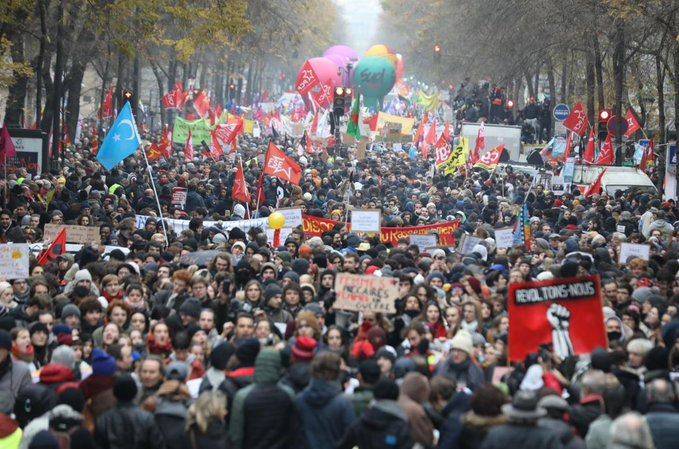Mackenzie Bouverat is a student at Harvard Law School.
What’s in labor news today? A cursory Google search gives the impression that organized labor is today plagued by fractious infighting. Indeed, there is no shortage of articles highlighting the apparent ideological divisions among labor unions in the face of a Democratic primary in which health care reform has been the subject of fierce debate. Undeniably, the sectoral interests of organized labor diverge on important issues (like health care reform). But the story of labor today is really about the convergence of the labor movement’s variegated interests in the face of a common threat: the Trump administration’s ever more concerted efforts to dismantle the right of workers to organize.
An article published by The New York Times today shows starkly the growing precarity of NLRA protections under Trump’s NLRB. The article recounts the trials and tribulations of Sean Caldwell, a former McDonald’s employee, who was fired–under the pretext that he had once been late for work–after appearing on national television at a Fight for $15 protest. In collaboration with the Service Employees International Union, Caldwell and fifty-nine other McDonald’s employees brought a case against the corporation for its active role in assisting its franchisees in suppressing unionization efforts. McDonald’s proposed settlement—no admission of wrong-doing and $170,000 in back pay to be divided among the sixty employees represented in the initial trial against the corporation—was rejected by the trial court judge, Lauren Esposito, on the grounds that it was unreasonable given McDonald’s “formulat[ion] and implement[ion]” of the franchisees’ retaliatory response against the Fight for $15. But by a 2-1 vote, the NLRB ordered Esposito to approve the settlement.
The NLRB is also poised to determine the fate of 150 Texan copper workers who, for the past four months, have been striking in protest of Asarco LLC’s plan to freeze pensions and double health insurance costs (in exchange for a small raise for a minority of “qualified” workers). The workers haven’t had a raise in over a decade. Strikers expect no progress on ongoing contract negotiations until the NLRB issues a ruling on the union’s complaints alleging unfair labor practices. If the NLRB rules that the strike is economically motivated—rather than motivated by unfair labor practices—the company may legally hire permanent replacement workers. Rick Levy, president of the Texas American Federation of Labor and Congress of Industrial Organizations (AFL-CIO), cautions the strikers about the likelihood of a disagreeable ruling.
Finally, the Federal Labor Relations Authority—which is responsible for the oversight of labor-management relations across the federal government—is proceeding with a proposal to make it easier for federal employees to opt out of union dues collection. Purportedly pursuant to Janus v. American Federation of State, which found that the collection by state and government unions of “agency fees” from non-union members violated the First Amendment, the FLRA will now allow employees to cancel their union dues at any time. As it now stands, employees may only elect to do so during a 15-day period each year.






Daily News & Commentary
Start your day with our roundup of the latest labor developments. See all
April 15
The Supreme Court ruled in favor of bakery delivery drivers in an exemption from mandatory arbitration case; A Teamsters Local ends its 18-month strike by accepting settlement payments and agreeing to dissolve
April 14
SAG-AFTRA wins AI protections; DeSantis signs Florida bill preempting local employment regulation; NLRB judge says Whole Foods subpoenas violate federal labor law.
April 12
The EEOC weighs in on an anti-discrimination lawsuit against Workday; a rule expanding overtime protection moves closer to publication; Amazon decreases spending on anti-union consultants.
April 11
Maine Legislature votes to grant farm workers minimum wage and labor rights; Apple store workers in New Jersey petition to unionize; and Wisconsin Governor vetoes legislation to rollback child labor laws.
April 10
NLRB general counsel vows not to succumb to pressure from SpaceX, Amazon, and others, the NLRB will seek make-whole remedies for unlawful work rules, and the LA County Federation of Labor joins the call for a ceasefire in Gaza.
April 9
UAW files for election at Alabama Mercedes plant; recent German law might boost UAW's organizing campaigns; Chicago Trader Joe's store files for election